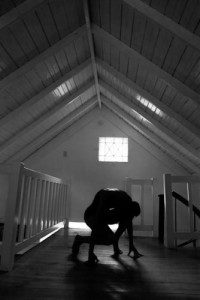(Creature, 2013 Varun Baker Photography)
In the article “Cultural Identity” and Diaspora, Hall offers two reflections on the cultural identity of Caribbean’s, Firstly, he discusses identity as a collective shared history, fixed and stable, this identity is communal and linked by race or ethnicity. From this understanding we gain the idea of “one people.” In his second reflection on identity, Hall explores an identity that is unstable, metamorphic and contradictory which culminates in points of similarities and difference. He further describes this identity as a matter “becoming” as well as “being.” We cannot speak of this identity with any matter of permanence, as this identity was born of the history and like everything historical they constantly undergo transformations. We as Caribbean’s are “what we really are”—or in another sense, we are “what we have become” due to the fact that history has intervened.
Hall uses Caribbean identities, along with his own, as he reflects on the need for the first identity (fixed and stable) against the truth of the second (unstable, metaphoric and contradictory) as a representing the post-colonial experience. In explaining more in-depth Caribbeans’ identity formation he uses Derrida’s theory of ‘difference’ to support his argument, acknowledging the temporal positioning of identity as “strategic” and arbitrary. He uses the three metaphoric presences; borrowing from the Negritude movement–Presence Africiane, Presence Europeene, and Presence Amerciane– to illustrate the idea of “traces” in our identity. The presences represent the three kinds of identities that are confronted in the formation of the Caribbean identity.
Primarily, the presence Africiane is the site of the repressed, “silenced beyond memory from the presence of slavery.” Next we have the presence Europeene, which is the site of colonialism, wroth with issues of power and the positioning “blacks” subjects within a dominant regime of representation. This power is not wholly external from us but it is internalized by its subjects and is a constitutive element of our identity. Finally, the presence Amerciane, the ‘New World,’ a “space where the creolisations and assimilations and syncretisms were negotiated.” Thus creating a site of cultural confrontation and points of new becoming.
Halls offers a very insightful interpretation of Caribbean identity formation. In my attempts to understand the intrigue processes described, I sought a visual representation, a mode of understanding, of reconciling the traumatic nature of the colonial experience. Through Varun Baker’s piece “Creature,” pictured above, I have attempted to formulate some metaphoric understanding of Halls processes. In this image we see a black body, a “Creature” coiled and twisted under the white slanted attic roof of a colonial or plantation great house, so much like the great houses that dot the Caribbean islands. This black coiled creature represents for me the presence Africiane, some faded repressed memory of the indigenous beliefs of the people of Africa. While I understand that generalization of African religious and cultural believes is difficult and at times problematic because of the diversity of the people that make up the continent, this creature represents for me the dying breathe of the oral traditions of the supreme beings, belief in spirits, along with the veneration of the ancestors and the power of magic. This creature sits within a prison build of the presence Europeene, encapsulated in exploitative colonialism, lacking consent, the oppressive colonial keeps the presence Africiane in check, relegating it to midnight rituals and secrets sermons wrapped and re-wrapped in the cloak of Christianity. This I believe is where we come into confrontation with the “New World” identities, or our presence Americaine, born of the confrontation between repression and oppression. We express these new world identities through Voodoo (Vodun) and Santeria spiritual practices, and Mento/Calypso traditional music styles, among other presentations.



Dwight, I really enjoyed your interpretation of Hall’s work. I visited the Varun Baker Photography site which you listed, and I thought I the photos were really moving. I can definitely see the connection between the “Attic” photo and the Hall’s work.
Dwight – what a fantastic summation of a reading that speaks so greatly to the powerful image above! I can really see your point thanks to the visualization and I love that you take the discussion of presence Africaine further with the mention of spiritual practices that have lingered in the Caribbean.